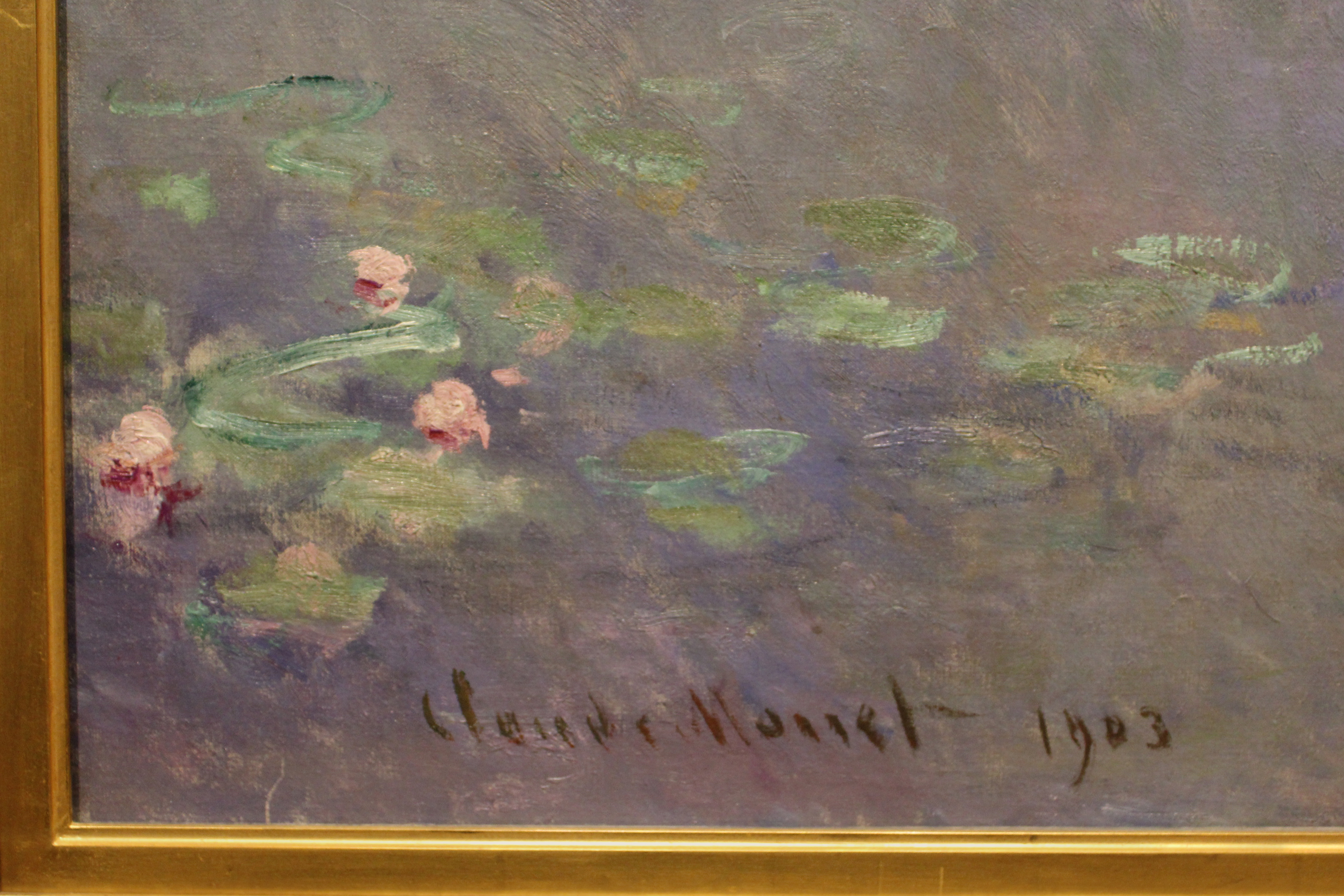(From info card)
"Monetís painting is one of hundreds he did of his lush garden and lily pond surrounding his home in Giverny, some thirty miles outside Paris. After moving there in 1886 he gradually added plantings carefully designed so that some portions would be in bloom nearly year round. As his fame and popularity grew, he was able to acquire an additional strip of land in 1893 where he dammed a creek to make a pond. These gardens and the lily pond became the primary focus of his art for the last forty years of his life.
"Today it is sometimes hard to appreciate how radical the waterlily paintings were when Monet painted them. The pond and the lilies floating on it are seen from close to the waterís surface. While we instinctively know the water is parallel to the earth as it recedes away from us, we just as quickly accept Monetís depiction of it on the vertical plane of the canvas. And, as he did consistently throughout his remarkably productive career, Monet records with paint his careful observation of nature at differing times of day, here the reflections of trees and sky on the waterís surface. Commenting on Monetís keen powers of observation, fellow Impressionist Paul Cťzanne said, 'Monet is only an eye, but what an eye!'"
|
|


